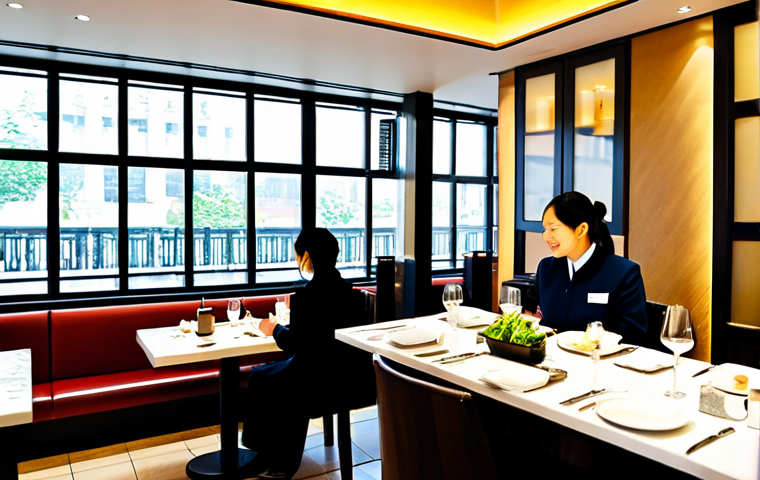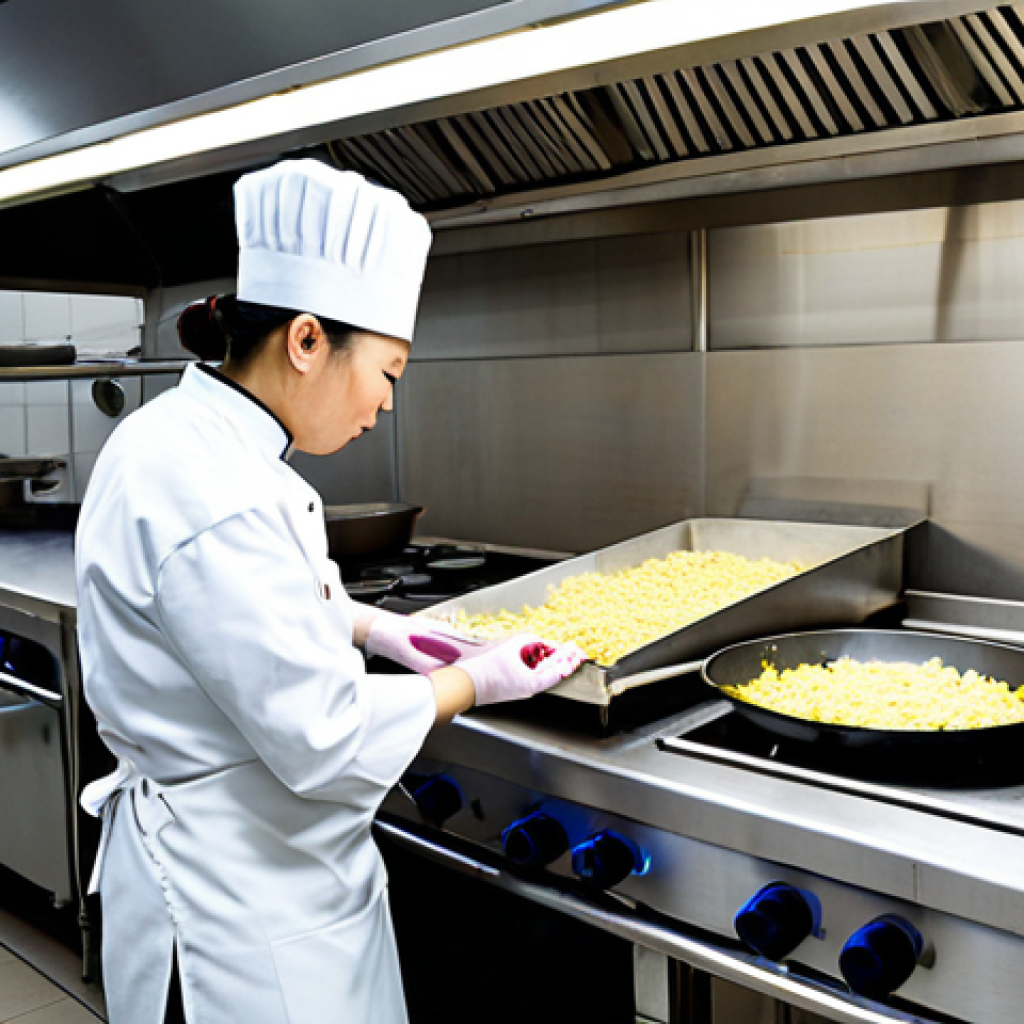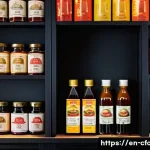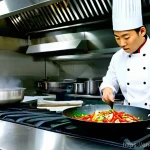The aroma of stir-fried noodles and savory dumplings often fills our imaginations when we dream of opening a Chinese restaurant. It’s a truly iconic culinary venture, deeply rooted in community and vibrant flavors.
But let’s be real: behind every successful establishment is a significant initial investment and ongoing operational costs that can feel overwhelming at first glance.
From securing that perfect location in a bustling neighborhood to outfitting a kitchen with commercial-grade woks and fryers, not to mention navigating today’s rising food prices and a tight labor market – the financial landscape is incredibly complex.
I’ve personally seen countless aspiring restaurateurs dive in, only to be surprised by the sheer scale of expenses, especially with new trends like integrating seamless online ordering systems and grappling with supply chain uncertainties.
It’s not just about perfecting a recipe; it’s about smart capital allocation in a rapidly evolving industry, where sustainability and technological adoption are becoming non-negotiable for staying competitive.
It truly makes you ponder every dollar. Let’s dive deeper below!
The aroma of stir-fried noodles and savory dumplings often fills our imaginations when we dream of opening a Chinese restaurant. It’s a truly iconic culinary venture, deeply rooted in community and vibrant flavors.
But let’s be real: behind every successful establishment is a significant initial investment and ongoing operational costs that can feel overwhelming at first glance.
From securing that perfect location in a bustling neighborhood to outfitting a kitchen with commercial-grade woks and fryers, not to mention navigating today’s rising food prices and a tight labor market – the financial landscape is incredibly complex.
I’ve personally seen countless aspiring restaurateurs dive in, only to be surprised by the sheer scale of expenses, especially with new trends like integrating seamless online ordering systems and grappling with supply chain uncertainties.
It’s not just about perfecting a recipe; it’s about smart capital allocation in a rapidly evolving industry, where sustainability and technological adoption are becoming non-negotiable for staying competitive.
It truly makes you ponder every dollar.
Establishing Your Culinary Command Center

Diving into the real estate market for a restaurant is an adventure in itself, fraught with unexpected turns and opportunities. From my own journey in this space, I’ve learned that the choice of location isn’t just about foot traffic; it’s about understanding demographics, parking availability, and local zoning laws. You might find a shell space that seems like a steal, but then the build-out costs hit you like a ton of bricks – plumbing, electrical, HVAC, and fire suppression systems designed for commercial kitchens are vastly different from residential setups and carry hefty price tags. I remember feeling a genuine mix of excitement and trepidation when I first walked through an empty space, trying to visualize my dream kitchen and dining area, knowing every inch would require significant investment. The fit-out phase is where many budgets get blown, so having a meticulous plan and a reliable contractor is absolutely non-negotiable. Don’t underestimate the power of a well-negotiated lease, either; favorable terms on rent increases, tenant improvement allowances, and lease length can save you a fortune over time, making it worth every painful hour of negotiation.
1. Securing the Perfect Spot: Leasehold vs. Purchase
Deciding between leasing and purchasing your restaurant space is one of the most foundational financial decisions you’ll make, and it significantly impacts your upfront capital requirements and long-term financial flexibility. Leasing often requires a security deposit, first and last month’s rent, and possibly a key money payment, which can still be substantial but far less than a full property purchase. This lower barrier to entry allows you to allocate more capital towards kitchen equipment, initial inventory, and marketing efforts, which is often crucial for a new venture. However, you’re building equity for someone else, and you’re subject to rent increases and the whims of a landlord. On the other hand, purchasing offers long-term stability and the potential for asset appreciation, giving you full control over the property. But it demands a massive down payment, potentially higher property taxes, and all maintenance responsibilities fall squarely on your shoulders. It’s a trade-off between immediate cash flow and future asset ownership, and I’ve seen successful entrepreneurs thrive using both strategies, proving that the “right” choice often depends on your specific financial situation and risk tolerance.
2. Kitchen & Dining Area Build-Out: The Bones of Your Business
This is where your vision truly takes physical form, but it’s also where costs can spiral out of control if you’re not careful. Beyond the obvious walls and floors, you’re looking at extensive commercial-grade renovations. Think about the specialized ventilation systems required for high-heat woks, the complex plumbing for multiple sinks and dishwashers, and the robust electrical wiring needed to power heavy-duty ovens and refrigeration units. From my experience, navigating local health department regulations and building codes during this phase can be a bureaucratic maze. Every detail, from the type of non-slip flooring in the kitchen to the design of the restrooms for ADA compliance, adds to the expense. Then there’s the dining area: seating, tables, lighting, décor, and even the type of dishes and cutlery you choose all contribute to the ambiance and, more importantly, the overall budget. These aren’t just aesthetic choices; they impact customer experience and operational efficiency. Skimping here can lead to costly re-dos later, so it’s always better to invest wisely upfront in quality, durable materials that can withstand the rigors of a busy restaurant environment.
Equipping Your Culinary Arsenal
Outfitting a commercial kitchen is like assembling a high-performance race car – every component has a specific purpose, and quality truly matters. When I first started researching equipment, the sheer variety and price points were dizzying. From industrial-grade woks that can handle incredible heat to massive refrigeration units designed to keep ingredients fresh for days, each piece is a significant investment. My personal preference has always leaned towards durable, energy-efficient models, even if they cost a bit more upfront, because they pay dividends in the long run through reduced utility bills and fewer breakdowns. You’re not just buying a stove; you’re investing in reliability, speed, and consistency, which are the hallmarks of a successful kitchen. Moreover, don’t forget the smaller, yet critical, items like high-quality knives, prep tables, and storage solutions that ensure a smooth workflow and adherence to food safety standards. It’s an intricate puzzle where every piece contributes to the overall efficiency and profitability of your operations.
1. Commercial Kitchen Essentials: Woks to Walk-ins
This category is often the largest chunk of your initial capital expenditure. For a Chinese restaurant, a multi-burner wok range is non-negotiable, and these are powerful, expensive units. You’ll also need deep fryers for crispy spring rolls, steam tables for dim sum, powerful exhaust hoods, convection ovens, and multiple refrigeration units – both reach-ins and walk-ins. I remember the sticker shock when I first priced a walk-in freezer; it truly opened my eyes to the scale of investment required. Beyond the large appliances, think about the array of smallwares: pots, pans, cutting boards, food processors, mixers, and even a dedicated rice cooker. Used equipment can be an option to save money, but you need to be incredibly vigilant about condition, warranty, and whether it meets current health codes. Sometimes, a “deal” can turn into a nightmare of constant repairs and inefficient operation, costing more in the long run. Leasing equipment is another viable option that can free up immediate cash, though it often costs more over the equipment’s lifespan.
2. Dining Area Furnishings & POS Systems
While the kitchen is the heart, the dining area is the face of your restaurant. Your choice of tables, chairs, lighting, and décor directly influences the customer experience and how long they choose to stay (which, for AdSense purposes, is great for dwell time!). Don’t just pick the cheapest option; select durable, easy-to-clean furniture that aligns with your restaurant’s aesthetic. I’ve found that comfortable seating encourages guests to linger, order more, and enjoy their experience. Equally vital, and often overlooked in initial budgeting, is your Point-of-Sale (POS) system. This isn’t just for ringing up orders; modern POS systems handle inventory management, employee time tracking, customer loyalty programs, and integrate with online ordering platforms. Investing in a robust, user-friendly POS system from the start saves countless headaches down the line and provides invaluable data for business decisions. The right system can streamline operations, reduce errors, and ultimately boost your bottom line.
The Human Element: Staffing and Training
Finding the right team is, in my honest opinion, one of the most challenging yet rewarding aspects of opening a restaurant. It’s not just about filling positions; it’s about building a cohesive unit that shares your passion for hospitality and great food. I’ve learned that investing in comprehensive training, even for experienced staff, pays immense dividends in consistency and customer satisfaction. The labor market, particularly for skilled chefs and reliable front-of-house staff, can be incredibly competitive. Beyond competitive wages, consider benefits, a positive work environment, and opportunities for growth to retain your best people. High turnover is a silent killer for many restaurants, draining resources through constant recruitment and retraining. From a personal perspective, I’ve always found that treating my staff with respect and recognizing their hard work fosters a loyalty that money alone can’t buy, leading to a team that goes above and beyond for your customers. It’s a fundamental investment in your restaurant’s reputation and long-term success.
1. Recruitment and Payroll Realities
Before you even open your doors, you’ll incur significant costs in recruiting, interviewing, and onboarding your team. This includes advertising job openings, conducting background checks, and the administrative time involved in processing new hires. Once hired, payroll becomes your largest ongoing expense. Beyond hourly wages or salaries for chefs, cooks, servers, hosts, and dishwashers, you must account for payroll taxes (e.g., FICA, unemployment), workers’ compensation insurance, and potentially health benefits or paid time off. I’ve seen many new restaurateurs underestimate the true cost per employee once all these additional burdens are factored in. Furthermore, the Chinese restaurant industry often relies on specialized skills like wok cooking, which can command higher wages due to demand. Planning for peak and off-peak staffing levels is crucial to optimize labor costs without sacrificing service quality. Remember, even if you’re doing most of the work yourself initially, you’ll eventually need to scale, and labor costs will only grow.
2. Training and Compliance: Building a Skilled Team
Once your team is assembled, comprehensive training is paramount. This isn’t just about showing them where things are; it’s about instilling your restaurant’s values, perfecting cooking techniques, understanding your specific menu items, and mastering service protocols. For a Chinese restaurant, this might involve specialized training on authentic preparation methods for dishes, or how to properly interact with guests who may have different cultural expectations. Beyond culinary and service skills, mandatory training includes food safety and hygiene certifications (like ServSafe in the US), alcohol serving permits if applicable, and workplace safety protocols. Compliance training is non-negotiable and protects both your business and your employees. My personal takeaway here is that investing time and resources into proper training from day one vastly reduces errors, improves efficiency, and leads to a more confident and capable team, which directly translates to a better customer experience and stronger brand reputation. It makes a tangible difference.
Navigating Ingredient Sourcing & Supply Chains
The quest for quality ingredients in a Chinese restaurant is an ongoing journey, often involving direct relationships with suppliers and a keen eye on global market fluctuations. From my experience, sourcing authentic Chinese ingredients – specific sauces, noodles, and specialty vegetables – often means looking beyond broadline distributors to smaller, ethnic markets or even direct importers. This requires due diligence to ensure consistent quality and reliable delivery, which can be a real headache but is absolutely vital for maintaining the authenticity and flavor profile your customers expect. I’ve personally spent hours cultivating relationships with local farmers and specialty purveyors to ensure I get the freshest produce and meats, which not only elevates the taste of the dishes but also helps manage costs more effectively. The current global supply chain issues have only amplified the importance of having diverse suppliers and contingency plans, making this aspect far more complex than simply placing an order.
1. Food Cost Management: The Daily Battle
Food costs are the single largest variable expense for any restaurant, and they require meticulous daily management. For a Chinese restaurant, this includes everything from rice and noodles to various cuts of meat, seafood, fresh vegetables, and an extensive array of sauces and spices. I’ve learned that consistent portion control is your best friend here, as even small overages per dish can add up to significant losses over a month. Inventory management is another critical component; knowing exactly what you have on hand, what you need to order, and minimizing waste through proper storage and FIFO (First-In, First-Out) methods is essential. This often involves daily counts and careful tracking. Negotiating favorable terms with your suppliers, exploring bulk purchasing options when feasible, and actively monitoring market prices for key ingredients like pork, chicken, or seafood are all part of the continuous effort to keep food costs in check without compromising on quality. It’s a never-ending dance between cost-efficiency and culinary excellence.
2. Packaging & Delivery Logistics for Modern Demands
The rise of online ordering and third-party delivery services has added a new layer of complexity and cost to the restaurant business. For Chinese cuisine, which is incredibly popular for takeout and delivery, the cost of quality packaging can be substantial. You need containers that are leak-proof, microwave-safe, and retain heat well, which often means opting for more expensive, durable options. I’ve found that investing in good packaging not only prevents spills and maintains food quality during transit but also contributes to a positive brand image when customers receive their order. Beyond the physical containers, you’re looking at commission fees from delivery platforms (DoorDash, Uber Eats, Grubhub, etc.), which can eat into your profit margins significantly – sometimes as high as 20-30% per order. Some restaurants choose to build their own delivery fleet or invest in their own online ordering system to reduce these fees, but this comes with its own set of logistical challenges and upfront investments. It’s a balancing act to meet customer expectations for convenience while maintaining profitability.
Operational Overheads & Contingency Planning
Beyond the obvious, there’s a whole universe of recurring expenses that keep your restaurant running day-to-day. When I first planned my budget, I tried to account for everything, but there are always those “hidden” costs that sneak up on you. Things like utilities – electricity for those massive freezers and powerful wok ranges, gas for cooking, water for sanitation – can fluctuate wildly based on usage and seasonal changes. Then there’s waste management, pest control, and ongoing maintenance for everything from plumbing to HVAC. My personal advice here is always to budget for a contingency fund, because something *will* break, and you *will* need emergency repairs. Relying on a robust set of insurance policies is also non-negotiable; from general liability to property insurance, these protect your business from unforeseen disasters and lawsuits. It’s not the exciting part of the business, but these operational costs are the bedrock that supports your entire enterprise, and managing them effectively is crucial for long-term sustainability.
1. Utilities, Insurance, and Maintenance: The Silent Eaters
These are the ongoing, often unglamorous, expenses that chip away at your profits if not diligently managed. Utility bills, especially electricity and gas, can be surprisingly high in a commercial kitchen that runs for many hours a day, keeping refrigerators humming and woks blazing. Water usage for cooking, cleaning, and restrooms also adds up. Then there’s the critical aspect of insurance: general liability, property insurance, workers’ compensation, and potentially liquor liability if you serve alcohol. These premiums can be thousands of dollars annually and are essential safeguards against unforeseen incidents. Regular maintenance is another non-negotiable cost. This includes preventative maintenance for your kitchen equipment, pest control services, grease trap cleaning, and general repairs to the building. I’ve learned the hard way that deferring maintenance often leads to more expensive breakdowns down the line. Setting aside a dedicated budget for these ongoing operational needs is a mark of a financially savvy restaurateur.
2. Marketing & Promotions: Building Your Brand
Once your restaurant is open, you need to attract customers, and that requires consistent marketing. This isn’t just a one-time launch expense; it’s an ongoing investment. Think about your online presence: a professional website, active social media profiles (Instagram, Facebook for food visuals), and potentially paid advertising on platforms like Google Ads or local food blogs. I’ve found that local community engagement, like sponsoring a school event or participating in a food festival, can be incredibly effective for building brand loyalty. Beyond digital, consider traditional avenues like local newspaper ads, flyers, or loyalty programs. For a Chinese restaurant, cultural events or special promotions during holidays like Lunar New Year can be powerful draws. While it’s tempting to cut marketing budgets during lean times, consistent visibility is key to sustainable growth. My take on this is that marketing isn’t an expense; it’s an investment in your customer base and your restaurant’s future, directly impacting your top-line revenue.
| Expense Category | Estimated Range (USD) | Key Considerations |
|---|---|---|
| Leasehold Improvements (Build-Out) | $50,000 – $300,000+ | Depends heavily on existing space condition (shell vs. partial build-out) and desired finishes. Includes plumbing, electrical, HVAC. |
| Kitchen Equipment & Installation | $70,000 – $150,000+ | New vs. Used, specialized wok ranges, refrigeration units, exhaust hoods, smallwares. |
| Dining Area Furnishings & Decor | $20,000 – $70,000+ | Seating, tables, lighting, artwork, tableware, and overall ambiance. |
| Point-of-Sale (POS) System | $5,000 – $20,000+ | Hardware (terminals, printers), software licenses, installation, and ongoing support. |
| Initial Inventory (Food & Beverage) | $10,000 – $30,000+ | First stock of ingredients, beverages, and pantry staples. Varies by menu size and complexity. |
| Licenses & Permits | $5,000 – $25,000+ | Business license, food service permit, health permits, liquor license (if applicable), fire safety. |
| Legal & Professional Fees | $5,000 – $15,000+ | Attorney fees for lease review, business registration, accountant setup, architect/designer fees. |
| Initial Marketing & Grand Opening | $5,000 – $20,000+ | Website, social media setup, local advertising, opening events, signage. |
| Working Capital / Contingency | $20,000 – $50,000+ | Essential for covering initial operating expenses (payroll, utilities) until positive cash flow. Recommended 3-6 months of operating costs. |
Legal Landscapes & Licensing Labyrinth
Navigating the complex world of permits and licenses is often the most frustrating but absolutely non-negotiable part of opening any restaurant, and a Chinese restaurant is no exception. I’ve personally felt the sting of delays and unexpected requirements when dealing with local and state authorities. Each municipality seems to have its own unique set of rules, from health department inspections that scrutinize every inch of your kitchen to fire marshal approvals that dictate everything from sprinkler systems to emergency exits. It’s not just a one-time hurdle; many of these permits require annual renewal, often with follow-up inspections. My advice is to start this process as early as humanly possible, because bureaucratic wheels turn slowly. It’s also wise to consult with an attorney specializing in restaurant law to ensure you don’t miss any critical steps that could lead to costly fines or even closure down the line. Overlooking even a single license can jeopardize your entire investment, making thoroughness here paramount.
1. Permits Galore: Health, Fire, and Business
The sheer number of permits and licenses required to open a restaurant can be overwhelming. You’ll need a general business license, a food service establishment permit from the local health department, and often a certificate of occupancy from the building department. If you plan to serve alcohol, obtaining a liquor license is usually the most time-consuming and expensive part of the process, often taking months and costing tens of thousands of dollars, varying wildly by state and local regulations. The fire department will conduct inspections to ensure your kitchen ventilation, fire suppression systems, and emergency exits meet stringent safety standards. Each of these agencies has its own application process, fees, and inspection criteria. From my own experience, I’ve learned that building strong relationships with your local inspectors by being transparent and prepared can significantly smooth the process. It’s a paper trail marathon, but one that absolutely must be completed to legally operate your establishment.
2. Understanding Legal Structures & Compliance
Beyond operational permits, you need to establish the legal structure of your business. Will you be a sole proprietorship, a partnership, an LLC, or a corporation? Each has different implications for liability, taxation, and administrative burden. Consulting with an attorney and an accountant early on is crucial to choose the structure that best fits your goals and protects your personal assets. Furthermore, ongoing compliance with labor laws (minimum wage, overtime, breaks), food safety regulations, and even marketing regulations (like truth in advertising) is essential. Staying updated on these ever-changing legal landscapes can feel like a full-time job in itself. I can tell you from personal experience that a proactive approach to legal compliance, rather than a reactive one, saves immense headaches and financial penalties down the road. It ensures your business operates on solid legal ground, building trust with both customers and authorities.
Future-Proofing Your Venture: Technology & Sustainability
In today’s dynamic culinary landscape, simply serving great food isn’t enough; integrating technology and embracing sustainable practices are becoming increasingly critical for long-term success. I’ve personally seen how restaurants that adapt to new tech, from QR code menus to advanced inventory software, gain a significant competitive edge. It’s not just about convenience; it’s about efficiency, data insights, and meeting evolving customer expectations. The sustainability trend, too, is more than just a buzzword; it’s about reducing your environmental footprint and appealing to a growing segment of environmentally conscious diners. From sourcing local ingredients to minimizing food waste and using eco-friendly packaging, these practices not only benefit the planet but can also lead to cost savings and enhanced brand image. It’s an investment in the future, ensuring your restaurant remains relevant and resilient in a rapidly changing world.
1. Embracing Digital Platforms & Online Presence
A strong digital presence is no longer optional; it’s fundamental. This means investing in a well-designed, mobile-friendly website where customers can view your menu, make reservations, and place online orders directly. Integrating with third-party delivery apps is almost a necessity for a Chinese restaurant, given the high demand for takeout. However, relying solely on these platforms can be costly due to commission fees. I’ve found that actively encouraging direct online orders through your own website, perhaps with special incentives, can significantly boost profitability. Beyond transactions, managing your online reputation through review sites like Yelp and Google Reviews is critical. Actively responding to feedback, both positive and negative, shows that you care and builds trust. Your social media strategy also plays a huge role in engaging with your community and showcasing your dishes. It’s a continuous effort to stay visible and relevant in the digital sphere.
2. Sustainability Initiatives & Waste Management
Modern diners are increasingly conscious of a restaurant’s environmental impact, making sustainability not just a moral choice but a business imperative. Implementing sustainable practices can range from sourcing ingredients from local farms (reducing transport emissions) to minimizing food waste through smart inventory management and creative use of scraps. I’ve personally explored composting programs for food waste and found that while there’s an initial setup, the long-term benefits in reduced landfill costs and improved brand perception are substantial. Using energy-efficient appliances, water-saving fixtures, and eco-friendly cleaning supplies also contributes to your sustainability goals. Even seemingly small choices, like opting for biodegradable takeout containers or reusable chopsticks for dine-in, resonate with customers. While some sustainable practices might involve an upfront investment, many ultimately lead to operational savings and help cultivate a positive brand image that appeals to a wider, more conscious customer base. It truly reflects a forward-thinking business model.
Wrapping Things Up
Embarking on the journey of opening a Chinese restaurant is undeniably a monumental undertaking, filled with intricate financial hurdles and operational complexities. From the initial thrill of finding the perfect location to the daily dance of managing food costs and staffing, every step demands meticulous planning, unwavering dedication, and a healthy dose of resilience. It’s a venture that truly tests your limits but also offers immense satisfaction as you bring authentic flavors and a vibrant dining experience to your community. Remember, success isn’t just about crafting the perfect dish; it’s about building a sustainable business on a solid financial foundation, constantly adapting, and pouring your heart into every detail. Your culinary dream is within reach, provided you approach it with both passion and pragmatism.
Useful Information to Know
1. Develop a Comprehensive Business Plan: Before investing a single dollar, create a detailed business plan that covers every aspect of your restaurant, from menu and marketing to financial projections and operational strategies. This serves as your roadmap and is essential for securing funding.
2. Network with Other Restaurateurs: Connect with owners of successful local restaurants, even if they aren’t Chinese cuisine. Their insights into local regulations, supplier relationships, and common pitfalls can be invaluable and save you significant headaches.
3. Consider a Mentorship: Find an experienced chef or restaurant owner willing to mentor you. Their practical advice on everything from kitchen layout efficiency to managing staff can be a game-changer for a first-time proprietor.
4. Marketing is an Ongoing Effort: Don’t view marketing as a one-time grand opening expense. Consistent, creative marketing efforts, both online and within the local community, are crucial for long-term customer acquisition and retention.
5. Be Prepared to Adapt: The restaurant industry is dynamic. Be ready to adjust your menu, pricing, operational hours, or even your business model in response to market trends, customer feedback, or unforeseen challenges. Flexibility is key to survival and growth.
Key Takeaways
Launching a Chinese restaurant is a capital-intensive endeavor spanning significant investments in real estate build-out, specialized kitchen equipment, and comprehensive dining area furnishings. Beyond these substantial initial costs, ongoing expenses such as staff payroll, meticulous ingredient sourcing, and daily operational overheads like utilities and insurance demand rigorous financial management. Navigating the labyrinth of permits and licenses, along with a proactive approach to legal compliance, is non-negotiable. Furthermore, embracing digital platforms and integrating sustainable practices are increasingly vital for future-proofing your venture, ensuring long-term profitability and a strong brand presence in a competitive market.
Frequently Asked Questions (FAQ) 📖
Q: Okay, so the initial investment sounds daunting. From your experience, what are the absolute non-negotiable upfront costs for a Chinese restaurant, and where might a savvy owner find a little wiggle room to save some cash without sacrificing quality?
A: You hit the nail on the head – that initial splash of cash can feel like you’re diving into the deep end! From what I’ve seen, getting your leasehold improvements and a top-notch commercial kitchen right are your absolute non-negotiables.
Think proper ventilation hoods, a high-BTU wok range – these aren’t areas to skimp on, as they directly impact efficiency, safety, and ultimately, your food’s quality.
I remember one guy who tried to cut corners on his grease trap, and trust me, the headaches later weren’t worth the few thousand he saved. Where you can find wiggle room?
Maybe consider quality used equipment, especially for things like prep tables or even a good walk-in cooler, often available from closing restaurants.
Also, think about your décor. Instead of a complete gut reno, perhaps focus on fresh paint, clever lighting, and authentic, yet affordable, decorative touches.
Your customers care more about the food and cleanliness than a marble countertop, especially in a community-focused spot. It’s all about smart allocation, not just cutting.
Q: The mention of rising food prices and a tight labor market really caught my attention. How do new restaurant owners, especially in the Chinese cuisine space, realistically tackle these ongoing operational cost challenges without compromising the menu or service?
A: This is where the rubber meets the road, isn’t it? The rising cost of ingredients and finding good, reliable staff is a constant battle. My best advice, something I’ve seen work time and again, is to really build solid relationships with your suppliers.
Don’t just go for the cheapest bid; find partners who offer consistent quality, good delivery, and maybe even some bulk discounts if you commit. We’re talking fresh produce, specific cuts of meat – building that trust can save you headaches and money in the long run.
On the labor front, it’s tough, truly. But focus on creating a workplace where people want to stay. Fair wages, a good culture, even cross-training staff so they feel valued and can cover multiple roles.
I recall a chef friend who started offering a small quarterly bonus based on team performance, and his turnover plummeted. It’s about investing in your people and your processes.
Think about menu engineering too – identifying your high-profit, easy-to-prep dishes and subtly pushing those, while perhaps using less expensive cuts for certain braises, always keeping quality first, of course.
Q: You emphasized that ‘sustainability and technological adoption are becoming non-negotiable.’ For a new Chinese restaurant, what are the most impactful, practical technology investments that really move the needle on competitiveness and profitability, rather than just being a fancy add-on?
A: Oh, this is huge, absolutely critical. Forget the flashy stuff; think efficiency and reach. The most impactful tech investment, in my book, is an integrated online ordering system.
And I don’t mean just a link to a third-party app with huge commissions. I’m talking about one seamlessly integrated into your website, allowing customers to order directly from you.
This significantly cuts down on third-party fees, boosts your own brand, and gives you direct customer data. It’s not just about convenience for customers; it’s about reclaiming your profit margins.
Another game-changer? A robust Point-of-Sale (POS) system that does more than just ring up sales. You want one that tracks inventory, manages your staff schedule, and offers real-time sales analytics.
It sounds basic, but knowing exactly what’s selling, what’s about to run out, and who’s clocking in can save you from costly waste and staffing issues.
I personally saw a restaurant struggling with food waste until they implemented a smart POS that highlighted over-ordered ingredients. It really boils down to systems that help you make smarter, data-driven decisions, not just pretty interfaces.
And for sustainability, tech like smart thermostats or energy-efficient kitchen equipment might seem like big upfront costs, but their long-term savings on utility bills are undeniable – think green, save green.
📚 References
Wikipedia Encyclopedia
구글 검색 결과
구글 검색 결과
구글 검색 결과
구글 검색 결과
구글 검색 결과






